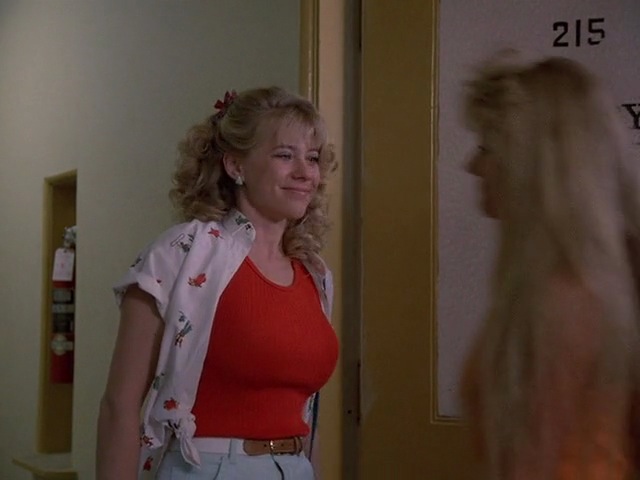 Remember back when porn required effort? If you grew up during the Internet age, chances are you don’t, but for those of us old enough to remember when e-mail was a term entirely devoid of meaning, it’s easy to recall those strange days where being too young to legally watch porn actually meant it was difficult to get your hands on it.
Remember back when porn required effort? If you grew up during the Internet age, chances are you don’t, but for those of us old enough to remember when e-mail was a term entirely devoid of meaning, it’s easy to recall those strange days where being too young to legally watch porn actually meant it was difficult to get your hands on it.
Maybe you had a friend with a drunk dad who wouldn’t notice a missing video from his stash or you found a torn up magazine some mentally ill stranger decided to throw away in the nearby neighbourhood park.
But mostly though it just existed as this thing you knew was out there, but no one talked about—kept hidden away in curtained sections of video stores and the top shelves of drug store magazine racks.
Like all things kept out of reach, this only inflamed our curiosity—a fact many TV news shows appreciated, knowing a “serious” report about the adult film industry was a guaranteed way to increase ratings, especially since it allowed them to show images of pretty young women in very little clothing all in the name of “real” journalism.
Given the kind of programing made during that time, it was rarer for fictional shows to explore this same territory—somehow porn just didn’t fit in well with The A-Team or Mr. Belvedere—but that’s why they invented the TV movie, which at the time had already become notorious for exploiting anything at all salacious for the sake of ratings.
That’s why Death of a Centerfold: The Dorothy Stratten Story, starring Jamie Lee Curtis, risked dancing on its subject’s grave in order to be seen on TV screens less than a year after she was murdered by her ex-boyfriend, Paul Snider (beating Bob Fosse’s much better treatment of the same story, Star 80, by two years). The ratings proved worth the effort and the networks regularly sought out material that involved tons of tastefully implied nudity with a touch of realistic drama (see also 1984’s I Married a Centerfold and 1991’s Posing: Inspired By Three Real Stories).
So in 1987, they took notice when the PBS documentary series Frontline aired Death of a Porn Queen, which told the story of the 1984 suicide of an adult film starlet named Shauna Grant (Colleen Applegate).
 Applegate’s story was a sad one, but hardly unique. She had left the small town of Farmington, Minnesota, to seek her fortune in California, where she and her boyfriend quickly spent all of their money searching for jobs that didn’t exist.
Applegate’s story was a sad one, but hardly unique. She had left the small town of Farmington, Minnesota, to seek her fortune in California, where she and her boyfriend quickly spent all of their money searching for jobs that didn’t exist.
Desperate for cash, they found an ad for the World Modeling Agency, which was owned and operated by Jim South (a well-known figure in the porn world who was hilariously named “Tim North” in Traci Lords’ autobiography Underneath It All, because she clearly didn’t give a fuck about people figuring out what sleazy asshole she was talking about).
Through South, Applegate went from being a nude model to a full-on porn star. During this period she developed a serious coke addiction and began a relationship with a small time dealer named Jack Ehrlich. Her life spiraled out of control when Ehrlich was sent to prison and ordered her to move out of his house. Certain she couldn’t move back home and live a normal life after her time in porn, she shot herself in the head with a rifle and died a few days later.
Like Stratten’s story it had all of the right elements—a hot blonde, porn, drugs and, best of all, a tragic ending. Producers rushed to her family’s doors and they agreed to sell the rights to Colleen’s story for enough money to pay for a nice tombstone for her grave. That next year, Shattered Innocence hit TV screens right in front of the eyes of twelve year old me.
It must have been successful, since it aired more than once and I watched it every single time for one key reason—it starred Jonna Lee and she possessed an impressively curvy figure. But that’s not to say it didn’t have an emotional effect on me. I remember being drawn in to her character’s sad story and it’s regretable conclusion. Enough so that I always remembered the film and was compelled to buy it when I saw it had been made available by Warner Brothers as a MOD DVD release.
 Watching it now, I am struck by two things that prove how much time can colour our perceptions. The first is how awful Ms. Lee’s performance is throughout much of the film and the second is how writer/director Sandor Stern made the strange decision to make her character the least sympathetic person in the film.
Watching it now, I am struck by two things that prove how much time can colour our perceptions. The first is how awful Ms. Lee’s performance is throughout much of the film and the second is how writer/director Sandor Stern made the strange decision to make her character the least sympathetic person in the film.
The copy line on the back of the DVD case reads “She was a decent girl in an indecent world,” which indicates that whoever wrote it never actually watched the film, but instead came up with this line on the basis of a quick plot summary. As written and performed, “Pauleen Anderson” (all of the names were changed despite the “This is a true story” announcement at the beginning of the film) is spoiled, bratty, foolishly ambitious and kinda dumb. She never strikes the viewer as ever having enough innocence to be shattered.
This is made even more apparent by the fact that characters who should come off at least a little scumbaggy are presented as thoughtful human beings with Pauleen’s best interests at heart. Even her coke dealer boyfriend is presented as a loving, caring guy who wishes she could see how the drugs he sells are ruining her life.
 The problem is that the limits of the TV medium forces the film to imply Pauleen’s degradation—showing us only her tearfully crying in a shower after her first on camera sex scene. With a better actress it might have worked, but Lee is too inconsistent as a performer to sell the shame she feels.
The problem is that the limits of the TV medium forces the film to imply Pauleen’s degradation—showing us only her tearfully crying in a shower after her first on camera sex scene. With a better actress it might have worked, but Lee is too inconsistent as a performer to sell the shame she feels.
At the time Stern was best known as the screenwriter of the hit movie, The Amityville Horror, which was based on a fictional book that was sold as a true story, and he had been working in television for several years when he made Shattered Innocence. As a piece of filmmaking it is never less than professional, but suffers from budget issues that make it feel stage bound, like many other TV productions. His next film, Pin: A Plastic Nightmare, would end up being his first and last theatrical feature, which is a shame since it’s a genuinely great movie about mental illness that was unfortunately sold as a run of the mill horror outing.
Lee’s career, which had seen her playing the blond ingénue in the Judd Nelson vehicle Making the Grade, didn’t survive Shattered Innocence. I remember recognizing her a few years later when she appeared as a model in a then-ubiquitous exercise equipment commercial where the camera spent a lot of time focusing on her chest.

Ultimately the problem with Shattered Innocence is that it refuses to acknowledge its exploitative heart and insists on being far too tasteful for its own good. Stern was too talented to allow the production to descend into tasteless camp, but that’s precisely what it needed to overcome the budgetary and censorship limitations he was forced to deal with. Despite being based on a true story, the film feels bloodless and generic (had the producer’s waited seven years, they could have made pretty much the same movie about Shannon “Savannah” Wilsey, an adult actress whose tragic story didn’t differ that greatly from Applegate’s), making what could have been a potential B-TV classic into a tedious cliche.
Viewed in a post-Boogie Nights world, Shattered Innocence plays itself too straight and corny to work as either a piece of entertainment or compelling anti-porn propaganda. I suspect Stern made the choices he did precisely to avoid the latter, but his even-hand ends up hurting the film rather than saving it. If you're going to a take a plunge into these murkey waters, you gotta go deep to find the treasures that make the trip worthwhile.

